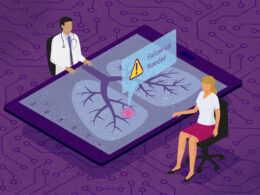healthtransformation
.foundation
Joaquim Cardoso MSc
February 20, 2024
This summary is based on the article “Artificial Intelligence’s Promise and Peril”, published by Harvard Public Health and written by Chris Sweeney on September 29, 2021.
What is the message?
The intersection of artificial intelligence (AI) and public health presents both immense promise and significant challenges.
While AI holds the potential to revolutionize diagnostics, treatment, and public health interventions, there are critical issues surrounding transparency, bias, regulatory frameworks, and the human aspect of healthcare that must be addressed.

ONE PAGE SUMMARY
What are the key points?
Potential of AI in Healthcare: AI, particularly in subsets like machine learning and deep learning, offers unprecedented capabilities in analyzing medical images, predicting disease outcomes, and improving healthcare delivery.
Transparency and Reproducibility: Concerns arise regarding the readiness of AI systems for clinical trials without independent validation, highlighting the importance of transparency, data sharing, and reproducibility in scientific research.
Algorithmic Bias: Instances of algorithmic bias, such as racial disparities in healthcare algorithms, underscore the need for diverse and representative data sets, as well as vigilance in identifying and addressing biases in AI systems.
Policy Challenges: Regulatory frameworks must evolve to keep pace with the rapid advancements in AI technology, addressing issues of privacy, data security, and ethical use while fostering innovation in healthcare.
Human-Centered Healthcare: Despite the potential of AI, the human aspect of healthcare, including empathy, intuition, and personalized care, remains indispensable and must be integrated thoughtfully with AI-driven solutions.
What are the key statistics?
Google Health’s AI system demonstrated significant improvements in mammogram analysis, reducing false positives and false negatives compared to human experts.
A survey found that 93% of executives believe AI enables their companies to better compete, highlighting the widespread adoption and perceived benefits of AI across industries.
What are the key examples?
Ziad Obermeyer and Sendhil Mullainathan’s study revealed racial bias in a healthcare algorithm, leading to disparities in patient care.
Joy Buolamwini’s research highlighted biases in facial recognition software, particularly in its accuracy with darker skin tones.
Conclusion
AI presents unparalleled opportunities to advance public health, but its integration must be approached with caution, ensuring transparency, addressing bias, and navigating complex policy landscapes.
Success in leveraging AI for healthcare hinges on collaboration, innovation, and a steadfast commitment to human-centered care.
To read the original publication, click here.












